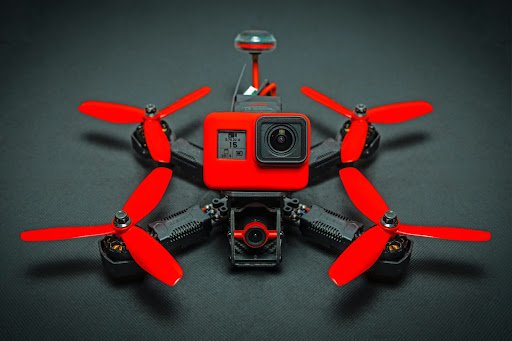What are FPV drones and why did they become the hottest thing in videography?
Once a primarily niche market, the demand for FPV drone services has grown significantly in a wide variety of industries in the last year. With a 250% increase in the number of visitors to our FPV page on our website and numerous calls requesting specifically for FPV Drone service, it seems as though filmmakers, production houses, creative and marketing agencies are now catching on.
The rising popularity of FPV drones in industries such as travel, real estate, automotive, retail, sports, fine arts, and more is proof that the benefits of FPV, such as safety, far fewer legal restrictions, and unique artistic style, are real and can be capitalized to your advantage. If you’re thinking about incorporating FPV into telling your story or promoting your brand, the place is here and the time is now!
How does it work?
FPV stands for First Person View, which refers to the view that the pilot sees through their FPV goggles. The pilot sees exactly what a camera on the nose of the drone sees, as if they were sitting inside the drone. This is in contrast to traditional “non-FPV” drones where the pilot controls the drone by looking at the drone from a distance in a “third-person” perspective. With precise planning along with the pilot’s experience, the drone can be flown predictably and safely. We will touch on safety in the following paragraphs.
The birth of a new revolution
Born out of the hobby of drone racing, FPV drones have always been about giving the pilot more control and allowing the drone to stay nimble. Through the advancement of HD transmission by DJI, the world’s leading manufacturer of consumer FPV Drones, it has liberated pilots from a fuzzy feed while the sport has evolved, branching off into the creative industry. With stabilizing software such as Reel Steady taking advantage of GoPro camera’s gyroscopic data, smooth and stable cinematic footage with very few or no takes, is now possible. What used to be accessible only to those with a Hollywood budget, is now possible even for small businesses.
DJI’s ready to fly FPV Drone doesn’t need to be assembled
Safety’s First
Using prop ducts or guards is essential for safety.
People tend to have stereo type drones as something strange or threatening - perhaps they are not safe or might cause trouble. FPV drones, and especially indoor FPV drones at Sky Tech One have propeller ducts, which encloses the propellers. FPV drones are also controlled using goggles, which gives the pilot more control and immersion, and can easily translate to added safety. FPV drones are also much smaller and typically fly at much lower altitudes, further reducing the chances of risks. With lots of planning, which typically involves a scouting session with the director and pilot at least a day before the actual shoot, FPV drone videography can be safe and predictable.
During that process, the crew discusses possible routes that the drone could take, environmental and technical limitations (transmission limits, where to call home base, obstacles), and safety concerns. Inevitably, there will be limitations discovered during the shoot day. At Sky Tech One, we continue to make this a collaborative process, using information from the scout and test runs to find various possible solutions. Because of the initial scout, the problems that arise on the shoot day are typically minor. As a result, as the crew progresses throughout the day, the whole team will be at an advantage in predicting and getting better shots.
Us on the set at The New York Public Library - see the TimeOut article featuring Sky Tech One here
Where is FPV going?
Hollywood films have been using non-FPV drones for a while. Documentary Filmmaker and Environmental Activist Yann Arthus-Bertrand, who has even used nothing but aerial videography using helicopters for his feature film, “Home”, has now switched to drones. More recently, in the world of FPV drones, pilots have been outfitting their drones with larger cameras, such as the FreeFly Wave or Alexa Mini. Cinema FPV is still in its infancy, but renowned companies such as Porsche have invested in large scale productions with Cinema FPV to give their audience a never-seen-before experience.
With all those advantages associated with FPV, where do you see FPV’s role in your production? Do you see its potential of disrupting the filmmaking and videography market? Let us know in the comments below and we will see you in the next article.
Check out our latest work for The New York Public Library here





